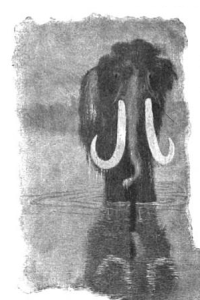
In October 1899, McClure’s magazine published an account of the hunting of a relict mammoth in the Yukon in 1890. “The Killing of the Mammoth” was fiction, but its realistic style and elaborate detail led many readers to believe that “the king of the primeval forests” really had been discovered in a hidden Alaskan valley, shot, and sold to a museum. “The points of the immense tusks looked as if they could hardly belong to their owner, being, as all the world knows, thirty-one feet, nine inches away from the bases,” wrote the narrator, “Henry Tukeman.” And “The meat was not unpalatable, but terribly tough.”
The following February, the editors recorded their “amazement” that the story “was taken by many readers not as fiction, but as a contribution to natural history.” “Ever since the appearance of that number of the magazine the authorities of the Smithsonian Institution, in which the author had located the remains of the beast of his fancy, have been beset with visitors to see the stuffed mammoth, and our daily mail, as well as that of the Smithsonian Institution, has been filled with inquiries for more information and for requests to settle wagers as to whether it was a true story or not.”
The editors reiterated that the tale was fiction — it had been listed as “A Story” in the issue’s table of contents — and they congratulated the author on the realism of his account. “We doubt if any writer of realistic fiction,” they wrote, “ever had a more general and convincing proof of success.”
